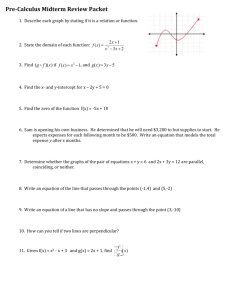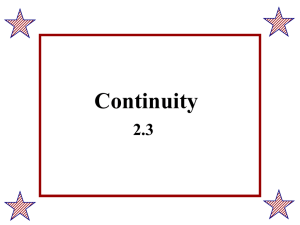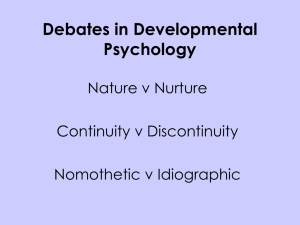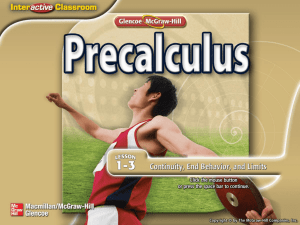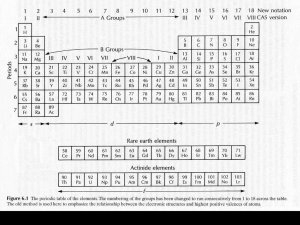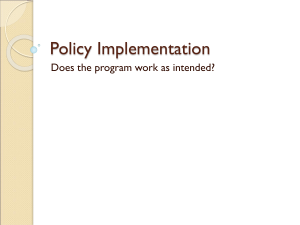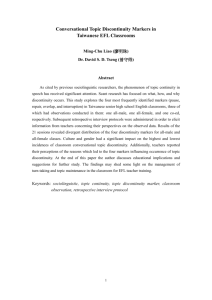Document
advertisement
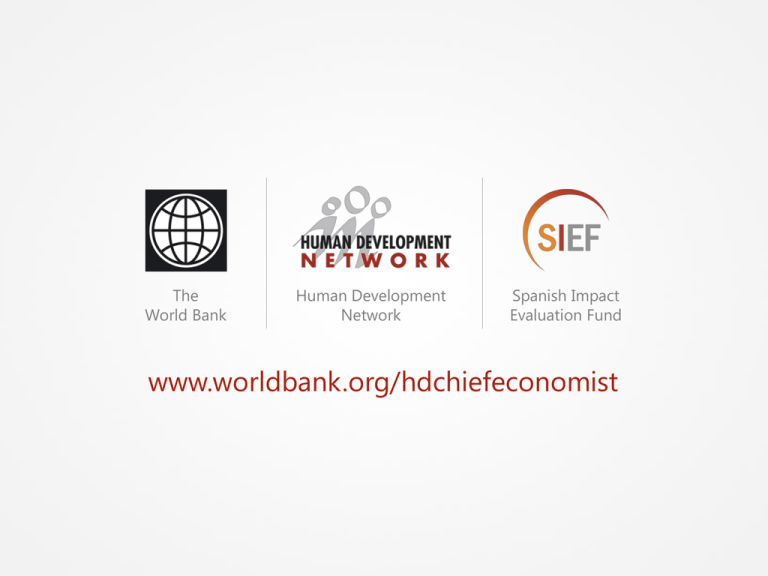
The World Bank Human Development Network Spanish Impact Evaluation Fund www.worldbank.org/hdchiefeconomist MEASURING IMPACT Impact Evaluation Methods for Policy Makers This material constitutes supporting material for the "Impact Evaluation in Practice" book. This additional material is made freely but please acknowledge its use as follows: Gertler, P. J.; Martinez, S., Premand, P., Rawlings, L. B. and Christel M. J. Vermeersch, 2010, Impact Evaluation in Practice: Ancillary Material, The World Bank, Washington DC (www.worldbank.org/ieinpractice). The content of this presentation reflects the views of the authors and not necessarily those of the World Bank. Counterfactuals False Counterfactuals Before & After (Pre & Post) Causal Inference Enrolled & Not Enrolled (Apples & Oranges) Randomized Assignment Randomized Offering/Promotion Discontinuity Design Difference-in-Differences Diff-in-Diff Matching P-Score matching IE Methods Toolbox Randomized Assignment Randomized Offering/Promotion Discontinuity Design Difference-in-Differences Diff-in-Diff Matching P-Score matching IE Methods Toolbox Discontinuity Design Many social programs select beneficiaries using an index or score: Anti-poverty Programs Targeted to households below a given poverty index/income Pensions Targeted to population above a certain age Education Agriculture Scholarships targeted to students with high scores on standarized text Fertilizer program targeted to small farms less than given number of hectares) Example: Effect of fertilizer program on agriculture production Goal Improve agriculture production (rice yields) for small farmers Method o Farms with a score (Ha) of land ≤50 are small o Farms with a score (Ha) of land >50 are not small Intervention Small farmers receive subsidies to purchase fertilizer Regression Discontinuity Design-Baseline Not eligible Eligible Regression Discontinuity Design-Post Intervention IMPACT Case 5: Discontinuity Design We have a continuous eligibility index with a defined cut-off o Households with a score ≤ cutoff are eligible o Households with a score > cutoff are not eligible o Or vice-versa Intuitive explanation of the method: o Units just above the cut-off point are very similar to units just below it – good comparison. o Compare outcomes Y for units just above and below the cut-off point. Case 5: Discontinuity Design Eligibility for Progresa is based on national poverty index Household is poor if score ≤ 750 Eligibility for Progresa: o o Eligible=1 if score ≤ 750 Eligible=0 if score > 750 Case 5: Discontinuity Design Score vs. consumption at Baseline-No treatment Fitted values Consumption Fitted values 379.224 153.578 276 1294 puntaje estimado en focalizacion Poverty Index Case 5: Discontinuity Design Score vs. consumption post-intervention period-treatment Fitted values Fitted values Consumption 399.51 30.58** Estimated impact on consumption (Y) | Multivariate Linear Regression 183.647 276 1294 puntaje estimado en focalizacion Poverty Index (**) Significant at 1% ! Keep in Mind Discontinuity Design Discontinuity Design requires continuous eligibility criteria with clear cut-off. Gives unbiased estimate of the treatment effect: Observations just across the cut-off are good comparisons. No need to exclude a group of eligible households/ individuals from treatment. Can sometimes use it for programs that already ongoing. ! Keep in Mind Discontinuity Design Discontinuity Design produces a local estimate: o o Effect of the program around the cut-off point/discontinuity. This is not always generalizable. Power: o Need many observations around the cut-off point. Avoid mistakes in the statistical model: Sometimes what looks like a discontinuity in the graph, is something else.
